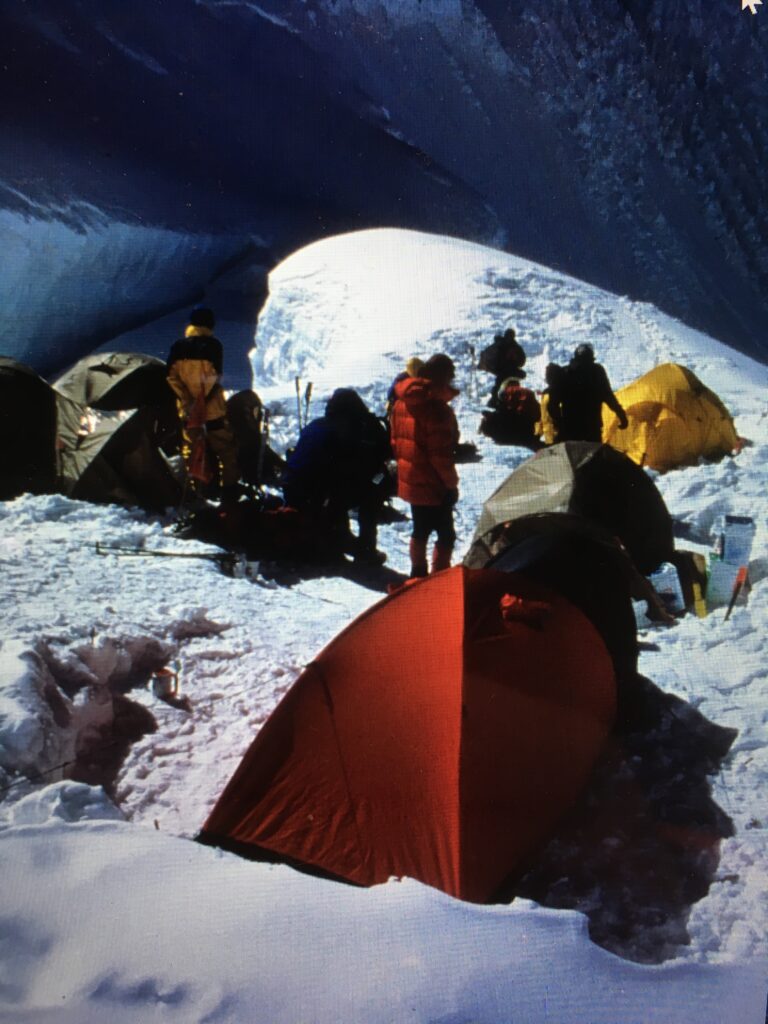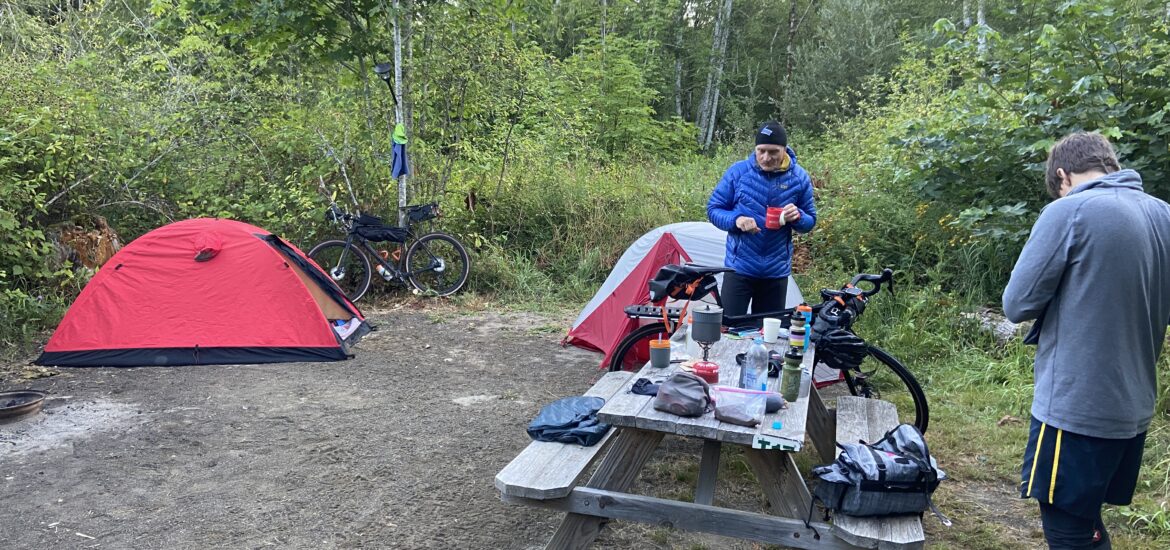I come to bikepacking from a climbing background and thus I see shelter from the lens and history of a mountaineer. One difference between the climbing and bikepacking culture seems to be that bikepackers tend to prefer solo sleeping systems. This makes sense as solo technical mountaineering is dangerous and rare whereas solo bikepacking is doable and commonplace.
Sleeping systems can be broadly categorized into three groups: bivy, tarp and tent. Let’s take a look at each.
The Bivy
The bivouac, or bivy, system consists of either a bivy “bag” or a bivy “tent.” The bivy bag is basically a body bag into which you insert your pad, your sleeping bag and ultimately yourself. Most designs have a mesh bug barrier and short pole that can be inserted to form a hoop which, in theory, keeps the fabric off of your face at night. The bivy tent is a bit more advanced in that it has a pole/guy line system that actually elevates the fabric off of your face/body, making it a bit more tolerable to sleep in while zipped up (i.e. in the rain).
Bivy bags are designed with the technical alpinist in mind meaning one dry night out with no need for storage (you can put all of your gear in your backpack) or privacy. In addition, they are designed for ease of use, minimum weight and maximum packability. The bivy bag is a minimalist approach and most of my nights in one were spent propped up on a ledge waiting for the morning sun.
I find that being zipped completely inside of a bivy bag quickly becomes intolerable. When I sleep I often get twisted into my sleeping bag which in turn twists inside the bivy bag and I wake in a panic unable to extract myself from this claustrophobic coffin. The lack of privacy (i.e. changing out of your chamois at the end of the day), lack of storage, and the inability to close yourself off from the rain, insects and rodents makes bivy bags a poor choice for bikepacking.
Bivy tents are a better choice for bikepacking than the bivy bag, but only slightly better. On the positive side, bivy tents are lightweight, packable and moderately comfortable, but on the downside they offer little to no storage and no privacy. Also most, if not all, bivy tents are not freestanding which means that you’ll either have to carry stakes or each night come up with some creative way of stringing the shelter up.
The Tarp
The tarp shelter also has roots in the mountaineering community, namely the Black Diamond Megamid (now deemed the Mega Light). The Megamid is/was a single pole pyramid designed to mainly be used on snow where the idea was to dig a hole and then erect the tarp as a fabric roof. The hole greatly increases the usable space while providing wind protection and insulation. In addition, when camping on snow you rarely need to worry about insects and creepy crawlies getting inside of your shelter so no floor no problem.
Tarps don’t have an integral floor thus they allow the intrusion of insects, rodents, lizards, scorpions and all other manner of unwanted guests. In addition, unlike a tent, a tarp is not an enclosed system and is much colder than sleeping in a cozy fully enclosed structure.
In my experience tarp style shelters are best either for an emergency get through the night structure or when camping on snow, and are thus not optimal for bikepacking.
Tent
Tents can be broken down into two major criteria: single-wall/double-wall and free-standing/non-free-standing. What most people are familiar with is the free-standing double-wall tent; this is your basic dome tent.
Double-wall tents achieve breathability and wind/rain/snow protection with a thin mesh inner layer and a waterproof/windproof outer layer. This is a time-tested design and works very well. On the downside double-wall tents are typically heavier (due to two layers of fabric) and more time consuming to erect than single-wall tents.
No fabric on the market today is truly both waterproof and breathable and thus when it comes to single-wall tents you will compromise on both when compared to the double-wall design. On the other hand, unless you are camping in extreme environments the trade off is small. The classic single-wall design uses two crossing interior poles, this free-standing design is strong, lightweight and ultra-fast to erect.
Both double-wall and single-wall tents come in free-standing and non-free-standing designs. Free-standing designs are self-supported and require no stakes or guy lines. Non-free-standing tents, on the other hand, need to be staked and guyed out. In my experience using stakes and guy lines will more than double the time required to both pitch and take down the tent. Guy lines are also a trip hazard in the dark. On multi-day trips I find that efficiency in making and breaking camp is paramount, and having a simple, easy to erect tent is worth a couple of extra ounces.
In my opinion the best option for bikepacking, especially on multi-day trips is a single-wall free-standing tent. Unfortunately, these designs are also the most expensive. On the double-wall side there are numerous super good, well- designed options. When selecting either a single or double-walled tent I suggest placing ease of use as a top priority – the last thing you want after a hard day is to be fumbling around in the dark with an origami project.

My tent of choice is a twenty-year-old Integral Designs MKII which is no longer available. Fortunately the Black Diamond I-Tent is nearly identical. My tent is a little under four pounds, weight that could be reduced if I invest in carbon fiber poles. Yes the MKII is a tad heavier than many of the modern bikepacking tents currently on the market, but when you consider that I don’t carry either a footprint (because the floor of the tent is heavy duty) or stakes the weight difference comes down to ounces. Also the MKII is a palace for one and comfortable for two.
Obviously where and how you ride will affect your shelter choice. Another factor is how much discomfort are you willing to live with. Lightweight isn’t everything, saving a pound but sacrificing a good night’s sleep might not benefit you in the long run.
